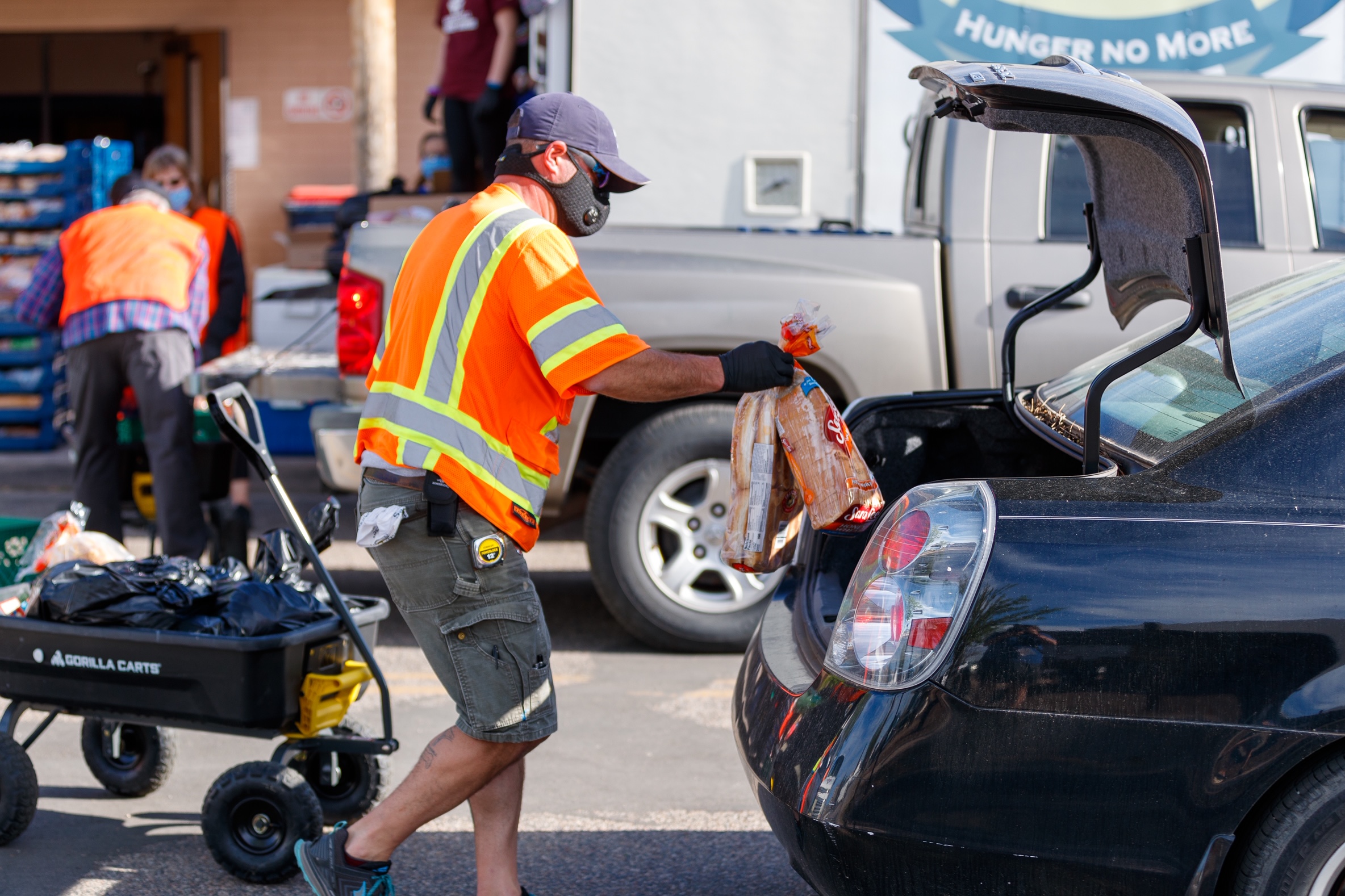The COVID-19 crisis has already caused a crisis in the American economy as businesses have been forced to shut down to maintain social distancing. According to the U.S. Department of Labor, at least 16 million people have filed unemployment claims in the past month, representing a tenth of the total workforce as of February. The total number of unemployed in the Verde Valley is unknown, but with restaurants and bars closed, it is likely quite high.
With so many workers unable to get their normal paycheck, local food banks have vastly expanded their services. Whereas usually food banks provide food for the most needy, they are currently providing food daily to anyone who asks for it, without any requirement of demonstrating need.
“In a typical time we see about 350 folks per week,” Jeremy Bellamy of Bread of Life, a food bank in Camp Verde, said. “Right now we’re pretty close to about 1,500. It’s pretty crazy right now. We basically take their word for it [that] if they say they have a need, they have a need. We don’t push it with them at all. You show up, you sign in, you get food.”
Bread of Life is one of several food pantries that is providing far greater services during this time, giving out food on Tuesdays and Fridays at the Redinger Ramada in Camp Verde. Manzanita Outreach, a Cottonwood-based food bank that provides food on Fridays and Saturdays at the Verde Valley Christian Church, created a website, MoHelp.org, which gives those who need food a schedule of available services, ways to contribute and a form to fill out to be added to the food giveaway list.
“The first thing I did was I immediately hired temporary part-time staff,” Michael Newcomb of Manzanita Outreach said. Newcomb has experience in food distribution supply chains, including work at Amazon, which he felt made him well-positioned to ramp up the charity quickly. “Most of our volunteers and anyone else’s are in the [elderly] at-risk group, so I wanted to make sure that we don’t have seniors congregating. We hired a staff and got some flexible conveyers, and we’re implementing social distancing in the warehouse. We can pack about a thousand boxes in about four hours.”
With social distancing guidelines, food pantries have also had to change how they distribute the food, switching from their usual farmers market system to new assembly line systems where they hand boxes of food through car windows. This has required new and ambitious levels of coordination, not just among volunteers and recipients, but also with local governments and police to manage traffic as cars line up.
“Without any warnings for our volunteers, without any warning to our clients, we had to adjust to a drive-thru model,” said Stacey Hayden, executive director of Project Rising Hope, which gives out food on Tuesdays at Journey Church in Cottonwood. “Ideally the client never gets out of the car. They just roll down the passenger-side window. It’s best for the safety of volunteer and client.”
Food at most local food banks is provided by St. Mary’s Food Bank in Phoenix, so the additional food supply has not yet been an issue for most Verde Valley food banks. However, they are finding that getting and distributing that food is costing money — Bread of Life has to spend an additional $500 per week to rent a truck to ship more food up from Phoenix every week. Nonprofits have also said that donations are lower with people having less money, taxing their reserves.
Kellie Wilson, executive director of the Old Town Mission in Cottonwood, said that the mission usually relies on donations from grocery stores in order to feed the needy, but the crisis has led to a massive drop in those donations, leading to the Mission having to spend more to accommodate demand.
“To keep feeding the hungry in our community we have ordered canned goods, cereal, peanut butter and other staples that we will use to prepare pre-packaged food boxes for our clients,” Wilson said. “These extra expenses were not accounted for so the best way for people to help us now is financially, which would help cover the cost of these extra food orders we have started making.”
Food bank leaders have said that despite the difficulties, this has been an inspiring moment, as all the nonprofits are working together more than ever.
“We’re trying to ensure that everyone has food to eat, regardless of their circumstances,” Newcomb said. “It’s how the community comes together and adapts.”
